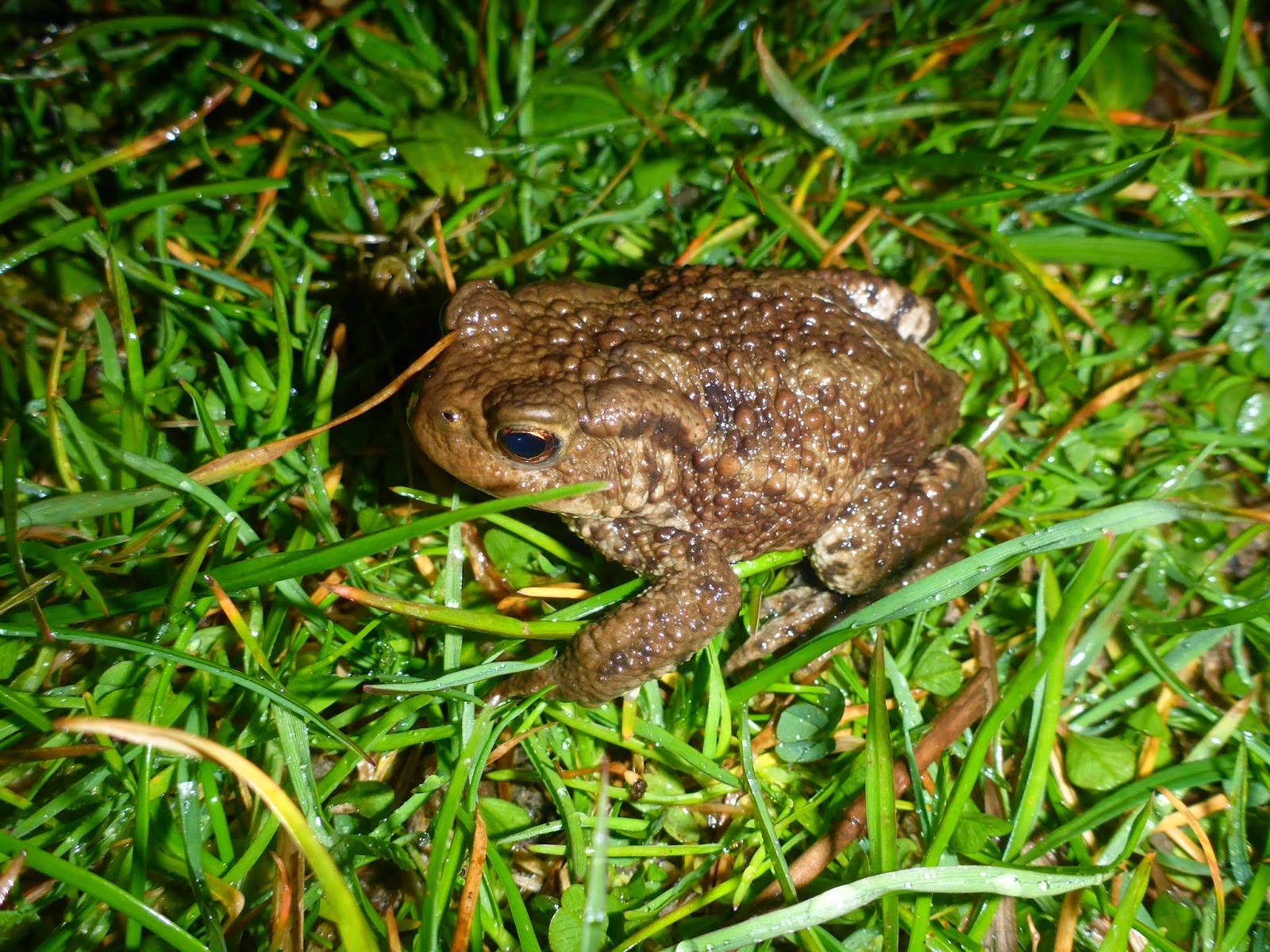 |
| Guests on our natterjack toad guided walk |
We are lucky to be part of the Duddon Estuary which is home to
approximately 25% of the entire population of natterjack toads in the
UK. Here at Sandscale Haws we have about 1000 breeding adults and are one of
the best places to see them up close. As they are such a vulnerable
species, it is illegal to not only handle them, but to also disturb them
in any part of their life cycle. For this reason Neil and myself hold a
license, this allows us to monitor their population and give educational
demonstrations out on site.
By monitoring the size of the toad population over many years, we can ensure that we have the balance of our reserve management just right. Our tall, rank vegetation is grazed by our livestock, this keeps the grasses and rushes low in order for other flora to thrive. Trampling of the ground by cattle also exposes bare sandy patches which allow pioneer plant species to establish, as well as providing areas for the natterjacks to burrow into for shelter. This rich floral community provides habitat for thousands of insects of which our toads will amble after for it's dinner. Natterjacks being short-limbed need this flora to be kept short to journey over, this is done by the grazing. In summary, by keeping the numbers of grazing animals at the right levels, in the right place, we can ensure a happy, healthy population of natterjack toads.
 |
| Fresh spawn. Photograph by Rod Mills |
Monitoring is done by walking around the margins of all our pools at least once a week during breeding season (mid-April and mid-June) and recording the number of spawn strings seen. Fresh-laid spawn can be easily recognised as a double row of spawn, after a few days it becomes transformed in to a single row (see previous blog for photos).
Natterjack toad on left, Common Toad on right
The skin of toads appears warty with large glands behind their eyes. The largest distinguishing feature to separate the natterjack from the common toad is the yellow line down the middle of it's back. Every line is different and can be used to identify an individual, very occasionally, though, you will come across a natterjack with no line. In this instance the colour of the iris gives the game away, with the common toad having a copper or amber colour and the natterjack having golden irises.
Natterjacks are generally smaller reaching a length up to 7cm, with the common toad getting up to 8cm. Between the sexes, the female is usually the largest, requiring more body weight for egg production. The male can also be recognised by two darker inner edges of the first two toes on it's front legs. These are called nuptial pads and help him provide a firm grip on his female whilst in amplexus (mating). Along with darker toes, the males "wear the trousers" in the toad world and when on his back can be seen to have a line of darker pigment on his back legs that the female toad doesn't have.
 |
| The male toad's nuptial pads |
 |
| The males "wearing the trousers" |
 |
| The male toads call from the edges of breeding pools to attract the females over. By inflating their vocal sacks their chorus can be heard up to 1km away, making them the loudest amphibian in Europe |
 |
| The male toad uses his nuptial pads to keep a firm grip on his female whilst in amplexus |
2014 monitoring so far...
So this is what our more mature spawn looks like at the moment...no wait they are tadpoles! It is not possible to distinguish between the species of tadpoles at this stage, however the common toad tadpoles are marginally bigger as they were laid earlier in the season. Also side by side the natterjack tadpoles have a slightly more pointed nose and appear less active than the common toad tadpoles. The common toad tadpoles like to move about as a shoal in the deeper areas of a pool, whereas the natterjacks are loners and prefer the warmer more shallow areas. As they grow, natterjack tadpoles will develop a white chin, and as they grow legs they get their yellow stripe, starting in the centre of their backs. Hopefully in the weeks to come I can show you more of their development...
Summary of spawning history
Year
|
Number of pools used
|
Spawn count total
|
2008
|
24
|
473
|
2009
|
8
|
194
|
2010
|
19
|
494
|
2011
|
15
|
527
|
2012
|
10
|
328
|
2013
|
23
|
305
|
2014
|
14
|
385 so far
|










